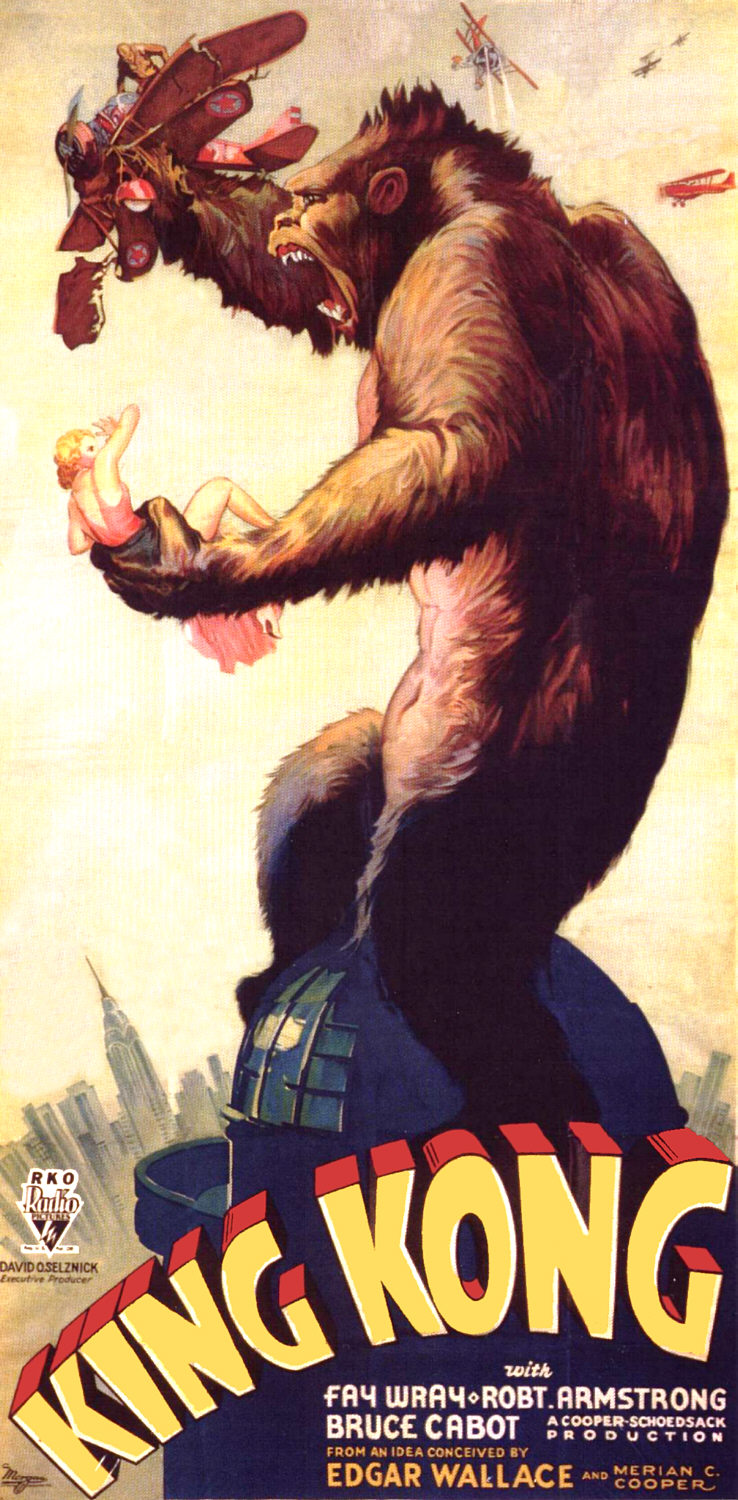
King Kong movie poster, © RKO Pictures Inc
Throughout his young life, Ray Harryhausen enjoyed frequenting movies with his family. As avid filmgoers, they valued exposure to the arts. Like many others, his family escaped the harsh reality of the Depression by going to see the original King Kong in 1933.

King Kong movie poster, © RKO Pictures Inc
Ray had never seen anything like King Kong. He was enthralled with what he later called the "most outrageous fantasy that has ever been put on the screen" and returned to see it repeatedly (The Artiface).
King Kong movie trailer, 1933, © RKO Pictures Inc
"Once I had seen the picture, my life was never the same again, and when I look back, I find it all rather difficult to believe that in one afternoon a film about a giant gorilla had the influence to alter the direction of my entire life."
~ Harryhausen's thoughts on King Kong (Harryhausen and Dalton, Ray Harryhausen: An Animated Life)
Thirteen-year-old Ray Harryhausen was especially fascinated by the visual effects, inspiring him to find out how the movie was produced.
Since the creators of King Kong wanted to keep their methods secret, the media was bursting with incorrect theories of how the magic was created.
"I knew it wasn't a man in a suit. There was a magazine article that even had a life-size Kong with electrical leads running out of it. Even at that age I knew that it couldn't be true."
~ Ray Harryhausen (The Guardian)
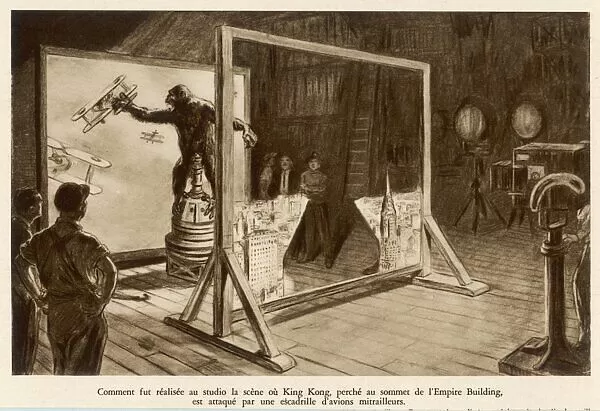
Artist's inaccurate rendering of the filming of King Kong, Mary Evans Prints Online Photo Prints
After researching, he found out it was made using stop-motion animation.
Harryhausen soon started tinkering with a camera and armatures, metal skeletons, hoping to learn the technique. His parents helped cultivate his interest; his father, an engineer, helped him make the armatures while his mother, a theatrical costumer, sewed the clothes for them. He broke into the world of stop-motion in his early twenties, making his first short films about dinosaurs in his garage.
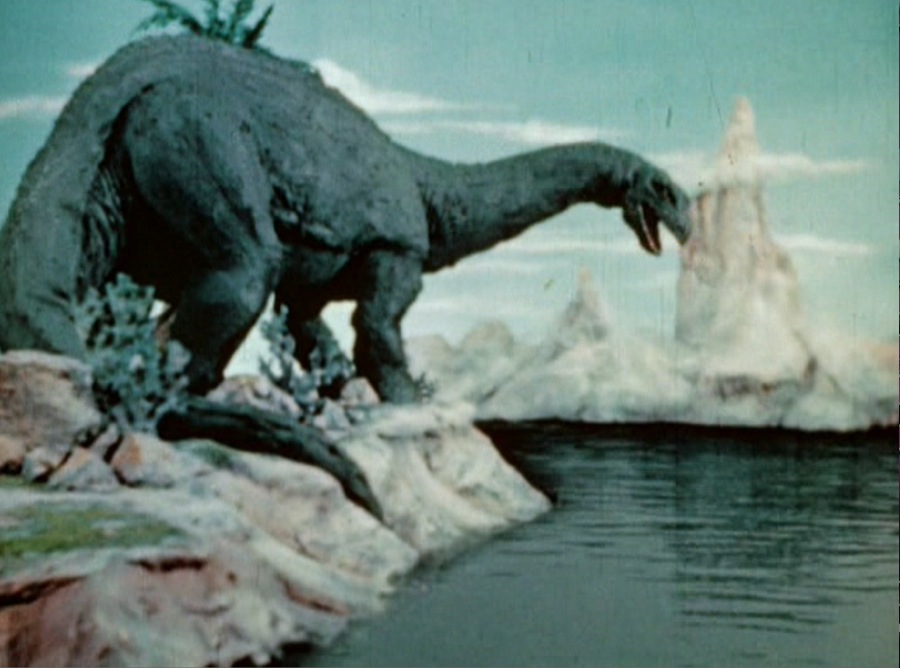
Early dinosaur model, © The Ray and Diana Harryhausen Foundation
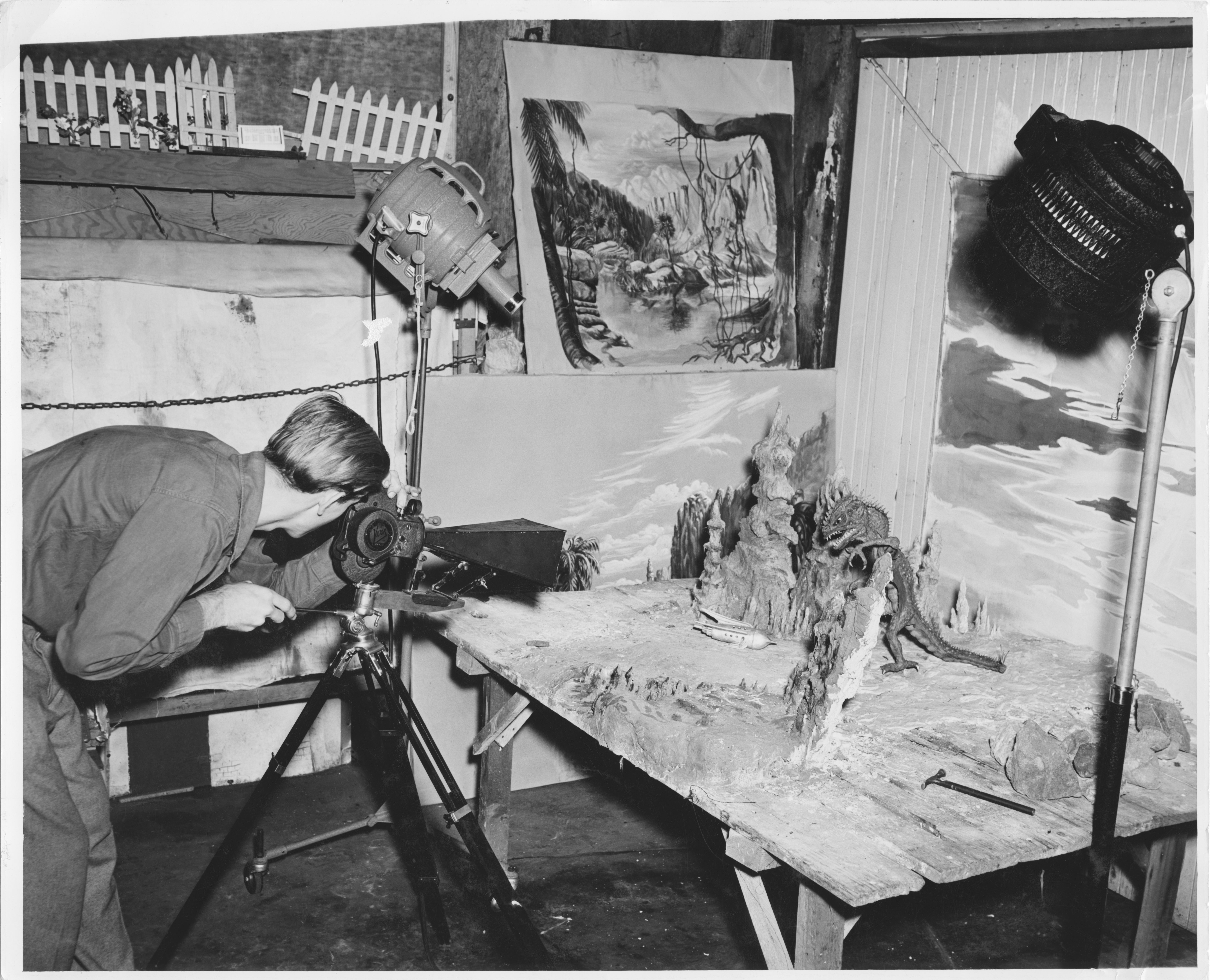
Young Ray filming in his parents' garage, © The Ray and Diana Harryhausen Foundation
When Harryhausen mustered the courage to show his work to Willis O’Brien, his inspiration and the animator of King Kong, O’Brien was impressed and encouraged him to study art and anatomy at Los Angeles City College to make his animation more life-like, refine his abilities, and enhance his knowledge. After following O'Brien's advice, Harryhausen got a job on Mighty Joe Young, doing about 90% of the animation because of O'Brien's trust in his abilities (Ray Harryhausen: an Animated Life 39).
Mighty Joe Young clip, © RKO Pictures Inc
Harryhausen's collaboration with O’Brien, Mighty Joe Young, won him an Academy Award in 1949.
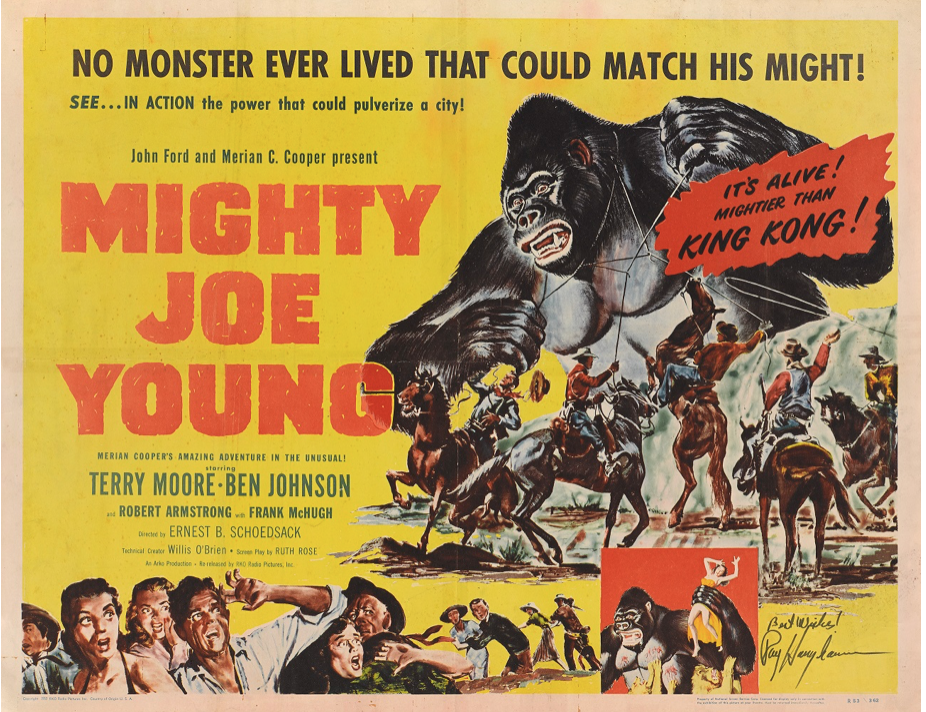
Mighty Joe Young movie poster signed by Ray Harryhausen, 1953 © The Ray and Diana Harryhausen Foundation
"Mighty Joe Young was most definitely an attempt to recapture the magic of King Kong."
~ Ray Harryhausen (Ray Harryhausen: An Animated Life)
While more could be done with special effects in stop-motion than was possible in live action, stop-motion could not fully integrate live actors, but Harryhausen had a revolutionary idea.